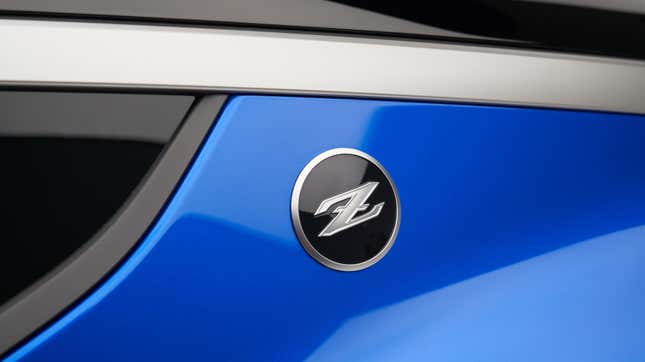
Between the reveal of the new Nissan Z and promising first impressions of the Toyota GR 86, sports car fans have had a lot to get excited about this week. In the early part of this new decade, we’re still getting reasonably priced rear-wheel-drive coupes with manual transmissions, that look swell and — at least on paper — figure to drive even better than the cars they’re replacing. And that’s great.
But there’s a negative sentiment I’ve seen floating about from a subset of the enthusiast community about these cars, because this is the internet and of course there is. The argument is that they’re not new: Both the upcoming Z and GR 86/Subaru BRZ are built on the same platforms as before, with their respective manufacturers doing as much to obscure the old as possible. Couple that with the brouhaha from a couple years ago about the Supra being “just a BMW,” and the narrative is that automakers who are interested in building performance cars aren’t doing it “the right way.” Put another way, “from scratch.”
I don’t agree with this take. We can’t wistfully recount old-school sports cars, lament their disappearance amid the onslaught of technology and then complain when successors arrive that are, in a few ways, slightly old. We also have to recognize the pragmatic reasons behind these decisions, and consider that if there wasn’t a way for automakers to carry development costs forward or split them between multiple parties, these vehicles wouldn’t exist. (Do these people know how long Porsche went before updating the structure of the 911? —ED)
So this isn’t a problem — at least not to me. But Nissan provided many high-resolution shots of the new Z in its press kit, perfect for pouring over to uncover vestigial 370Z cues. If that’s your idea of a fun time, 1) I also struggle with social gatherings and 2) you’ve come to the right place. Let’s take a look.
The Side Profile
Most of the obvious similarities are present in the interior. But if we take a look at the 370Z and new Z in profile, we can pick up on how Nissan’s cleverly tried to distract from the fact that both cars share the same FM underpinnings and even their Z34 chassis codes. Below you can see them superimposed atop one and another:
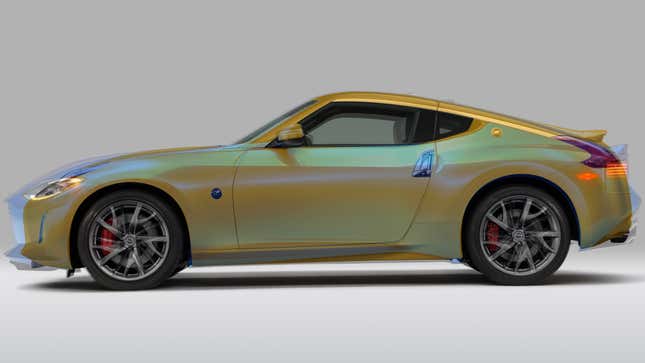
I know — the line-up job here isn’t perfect. I tried to get the two Zs about even with each other, while keeping in mind they share an identical 100.4-inch wheelbase. The 370Z is almost 5 inches shorter in overall length than the new Z. Height is dead even between the two, at 51.8 inches.
The lower cut line of the door trails off toward the front arch in a very similar fashion; that’s also true of the upper edge of the side windows. In fact, the windows follow the exact same curvature (though the new Z’s continue on for a bit longer), highlighting one of the tricks Nissan employed to make the forthcoming car appear visually lower and less stubby.
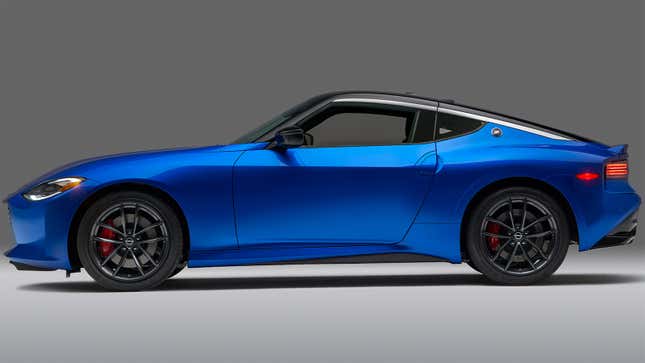
Yes, the seventh-gen Z is technically longer. However, the new coupe looks squatter because of its black roof, and this helps proportionally distance the car from its predecessor. It’s a very sneaky way of distinguishing the generations in terms of stance, and makes me wonder if Nissan will ever offer this Z with a body color-matching roof.
One of Nissan’s infographics actually gives this secret away. It shows blueprint sketches of every Z generation in profile. The illusion of the black roof doesn’t factor when looking at outlines rather than photos, and so the new Z looks noticeably taller and a lot more like the 370Z from the side when viewed in this fashion.
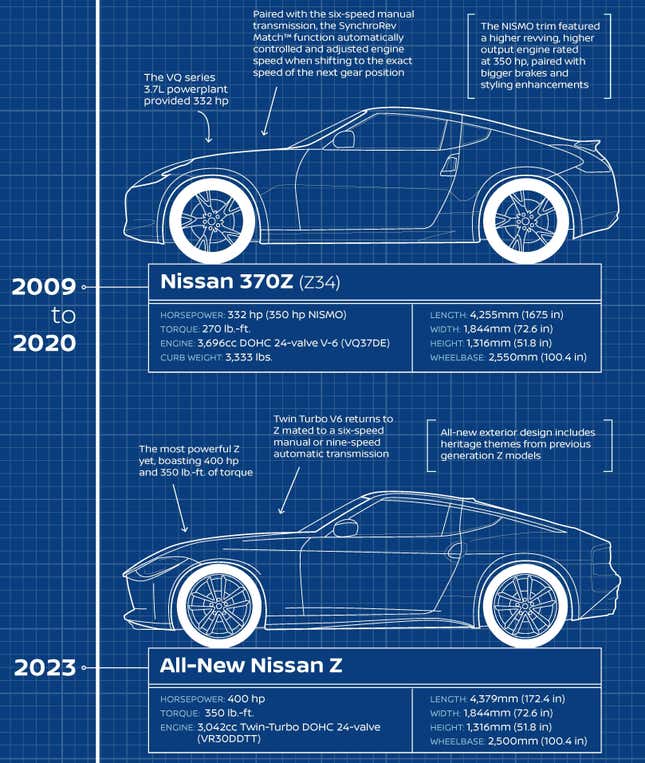
The Climate Vent/Door Handle Situation
The new Z’s retrofuturistic vibe does wonders to eradicate any hint of 370Z. To pick up on other ways in which the old car’s layout informed the new one, we have to head into the cabin. There, a clever but traditional element of Z car interiors is immediately apparent. Let’s zoom in on that side climate vent and door handle:
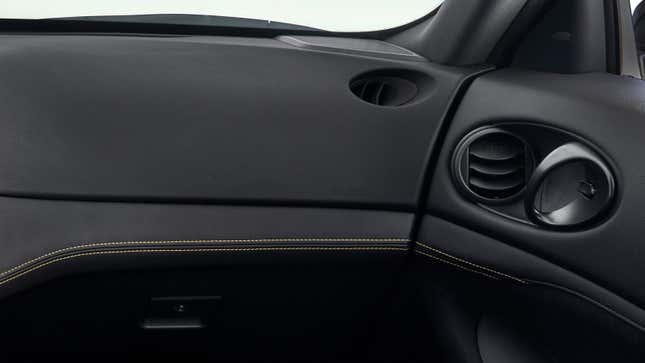
And now let’s peek at the cluster on the 370Z, in this case the NISMO version:
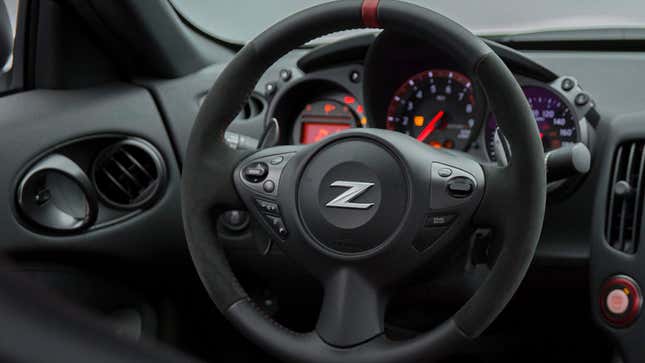
It’s not only the same general idea — placing the climate vent in the a pod with the circular door handle — but it’s identical in terms of part selection, too, right down to the lock switch functioning as a little tab on the inner edge of the ring. If we go back further into history we can see the 350Z incorporating the same design. However the parts are clearly different, as the vent housing bulges out more and the lock switch is in a different spot:
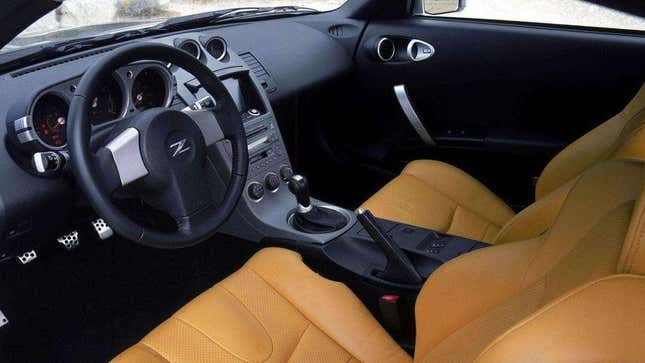
Almost The Whole Door Card
The inner door panels aren’t entirely the same between the 370Z and new Z, but aspects of them are. Besides the handle/vent deal, take note of the shape and location of the lower pocket, the speaker, the area where the window switches and other controls lead into the handle and the reflector. New Z:

And here’s the 370Z:
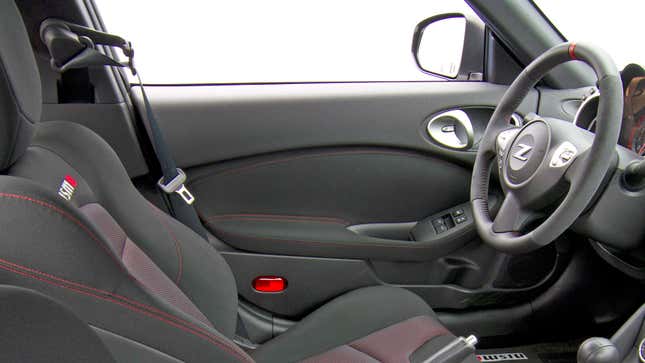
Of course, the design of the upper portion between the armrest and door handle is completely different across generations. On the new Z it looks fantastic trimmed in blue suede.
The Center Console
This one’s a bit less overt. Nissan clearly restyled the center console, lid and essentially the entire shroud over the transmission tunnel in this car. But it still looks vaguely similar; like some edges were smoothed over or accentuated, but the overall placement of things, like the emergency brake and cupholder, didn’t move.

Now the 370Z:
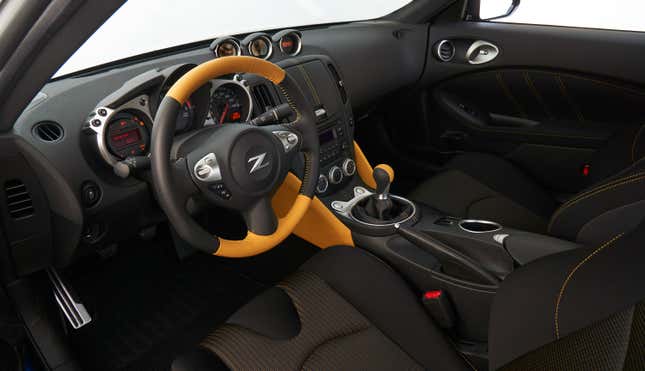
At least in the new car, it seems the center console lid can slide back, revealing another cupholder when needed:
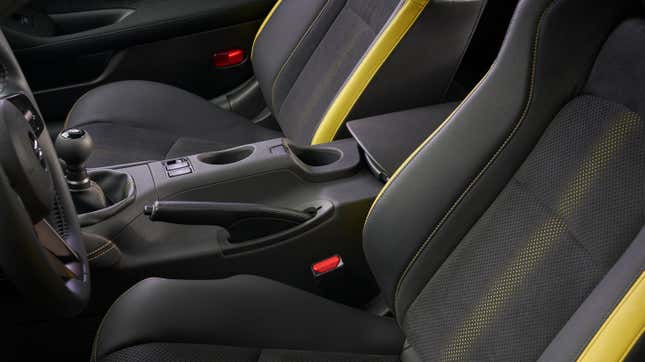
The Climate Dials
In the new Z, the three dials used for climate control — fan speed, temperature and position — look to be carried over wholesale from the previous car. The parts and their layout are unchanged. But the new Z offers a nice little storage cubby below them, which is particularly handy in a small interior.
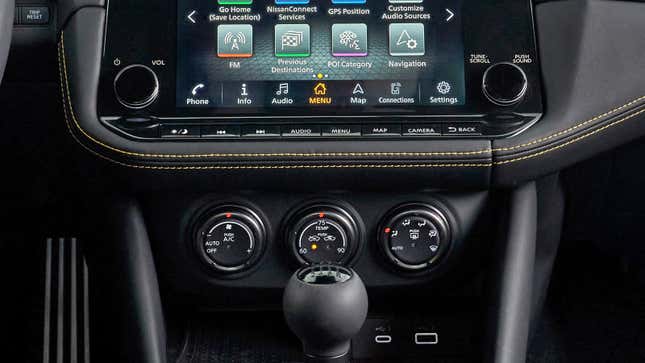
The 370Z:
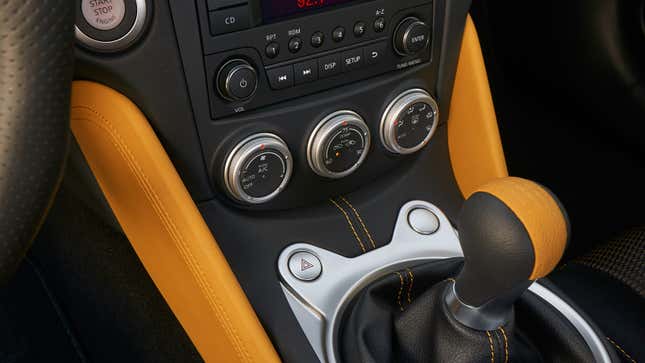
Bonus: The Clock Dial’s Gone!
Now for something, literally, completely different. One of the quirks of the 370Z’s interior that always puzzled me was its digital clock inside a dash-mounted gauge housing. It was exceptionally out of place next to real performance-y dials for battery volts and temperature. What’s more, it used a super retro-looking LCD display, like Nissan had extras lying around from the 300ZX days and just decided “we have to do something with these.”
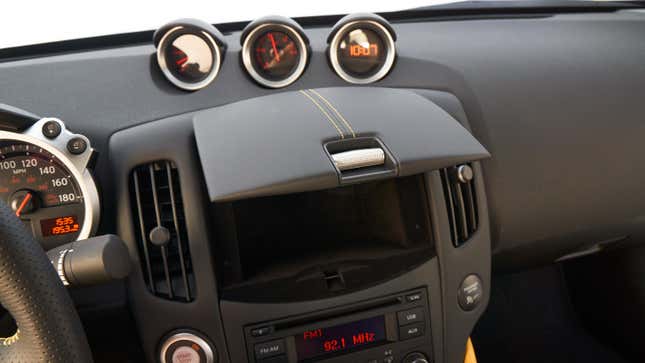
Well, that weird clock is gone in the new Z. The gauges are all new, and the voltmeter is the only one to remain in the group. The other two are now boost pressure and turbo speed.

Let’s be real though: Neither car’s gauges have anything on those in the Z31 300ZX:
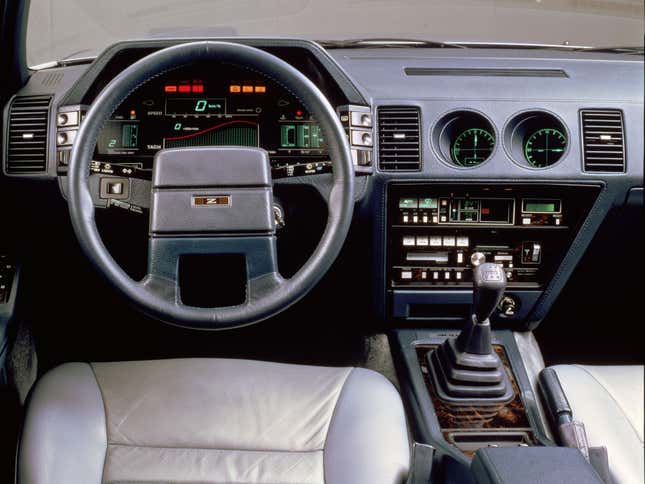
The new Z’s infotainment system looks great, but I think I’d rather have the Z31's G meter and compass dominating that space instead. They’re larger and given way more prominent placement than they deserve, and the green hash marks and text on a black background gives off a submarine oscilloscope vibe that was common in ’80s sports cars, but regrettably absent today. 10/10.
Those are the most glaring design similarities I can find between Nissan’s latest Z cars. For those who are as geeky about this sort of thing as I am, they’re interesting to note. Nevertheless, looking at the bigger picture, what’s been borrowed shouldn’t overshadow what hasn’t.
The 2023 Z starts with 70 more horsepower than the old one, thanks to that new (for the nameplate, anyway) 3.0-liter twin-turbo V6. Nissan’s engineers tweaked the suspension geometry and swapped out the shock absorbers; they improved rigidity and widened the front tires, too. The net result of these and a host of other changes make what should be a better rear-wheel drive sports car despite familiar bones. If reusing a platform and carrying over some parts was a necessary tradeoff so the Z could continue on like this, I reckon the sacrifices were well worth it.